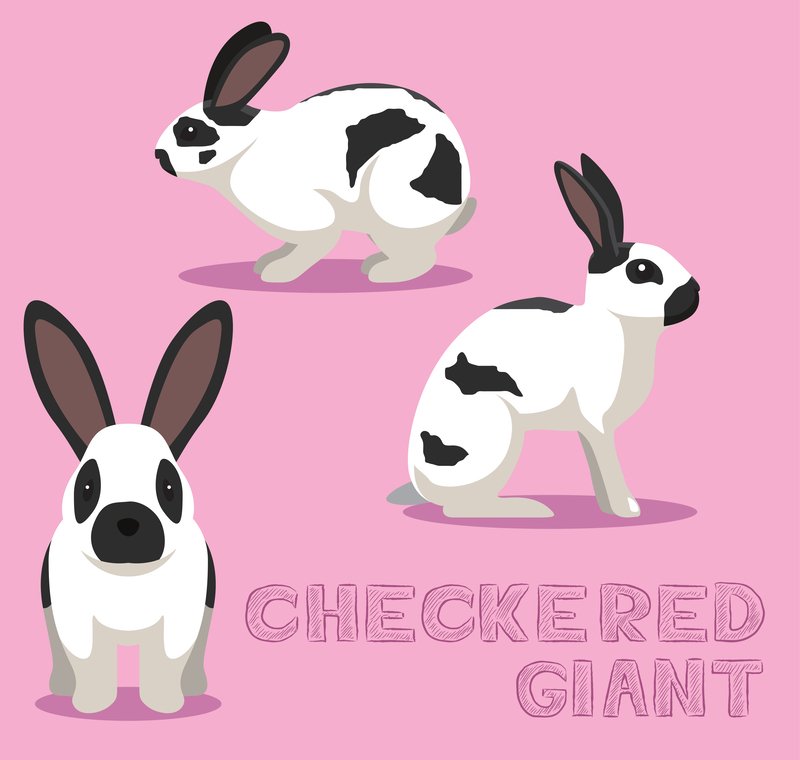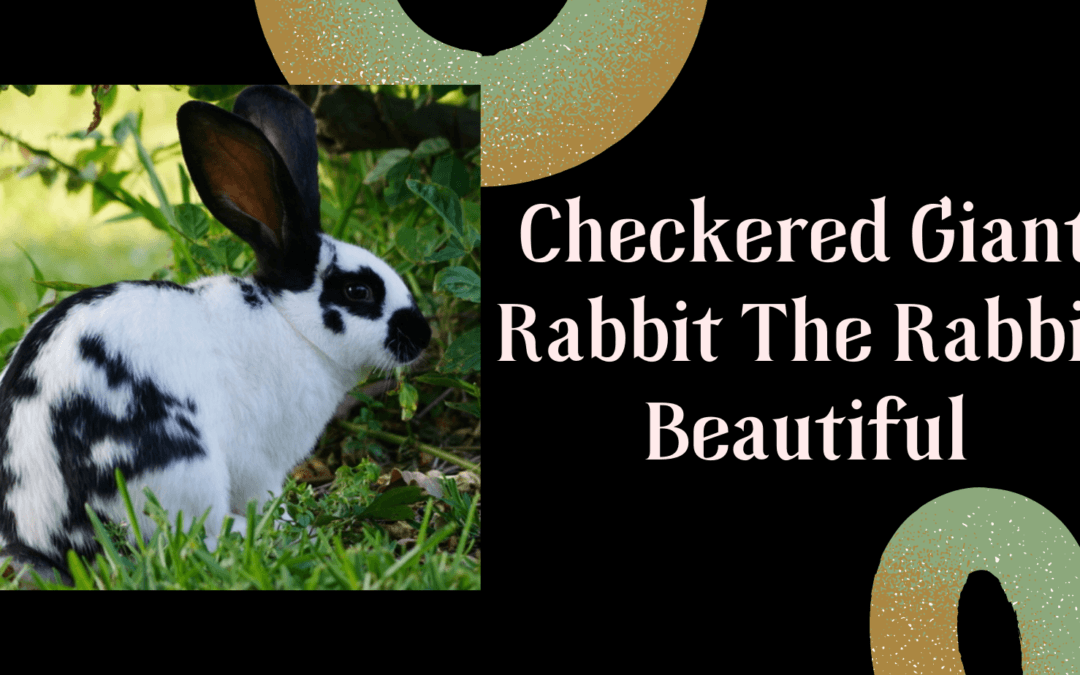A Checkered Giant rabbit is reared mainly for shows because of its unique markings. But aside from its beautiful spots, it also has a distinctive personality. These bunnies are laidback yet energetic and active. They are not affectionate, but these pet rabbit are perfect companions for owners who don’t prefer needy pets. Find more about these unique giants
Facts about Checkered Giant Rabbit
| Body Size | Giant |
| Body Weight | Over 13 lbs |
| Body Shape | Semi-arched |
| Life Span | 5 to 8 years |
| Colors | White with blue and black markings |
| Similar Breeds | Flemish Giant |
| Best Suited for | Singles, couples, and families with large spaces |
| Origin | France or Germany |
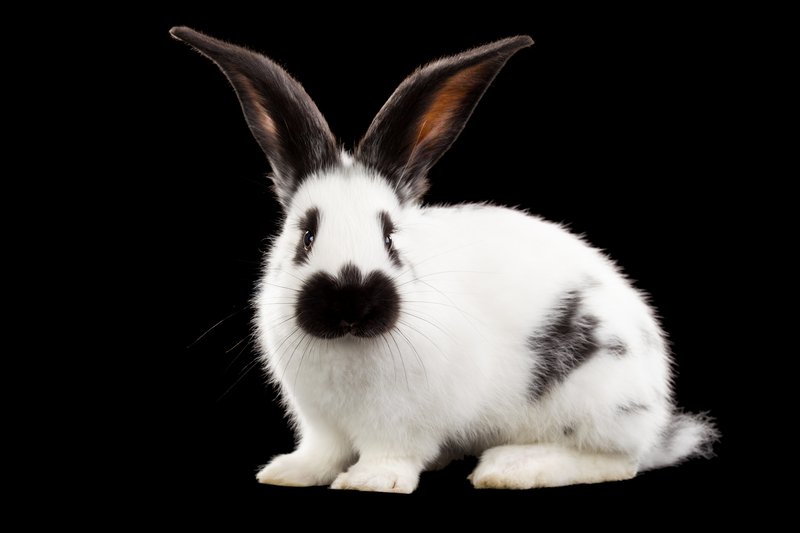
Background and History
Breeders are still determining the origin of Checkered Giant rabbits. But most believed these breeds appeared in either France or Germany during the 1800s. They were the offsprings of spotted rabbits, French lops, and Flemish giants. Called “Land Kaninchen”, they were only 10 to 12 lbs and didn’t have distinct markings yet.
The breeders in Germany paired up the Land Kaninchen with Flemish Giants. Their goal was to create more giant rabbits. It resulted in the “Lorraine Rabbit”, also called the “Great German Spotted rabbit”. In 1904, Mr. Otto Reinhardt of Germany bred the Flemish Giant with the Great German Spotted rabbit. It resulted in the Checkered Giant.
In 1910, the Checkered Giants arrived in the United States. Because of their butterfly markings, they became popular on rabbit shows. The American Rabbit Breeder Association recognized the breed after nine years. They are also called the fancy’s “The Rabbit Beautiful”.
Features of the Checkered Giant Rabbit
A Checkered Giant rabbit is one of the largest breeds recognized by the ARBA. It can reach up to 11 lbs and over 13 lbs. Its semi-arched bodies can reach 25 inches long and 30 inches high. It has long legs and broad heads, making them look like hares. The Checkered Giant rabbit also has large, upright ears.
For rabbit shows, the junior weight is 6 lbs and over, while the minimum weight for intermediate is 9 lbs. The senior does have a minimum weight of 12 lbs and 11 lbs for bucks. ARBA acknowledges two varieties of Checkered Giants. They are white with blue markings and white with black markings.
Short and soft, the rollback furs of the Checkered Giants are easy to groom and maintain. Their coats are popular because of their unique markings. Some of these are the blue or black markings around their eyes and spotted ears and cheeks. These bunnies have butterfly markings on their noses. They also have long stripes from their ears to their tails. Their feet are covered with white furs.
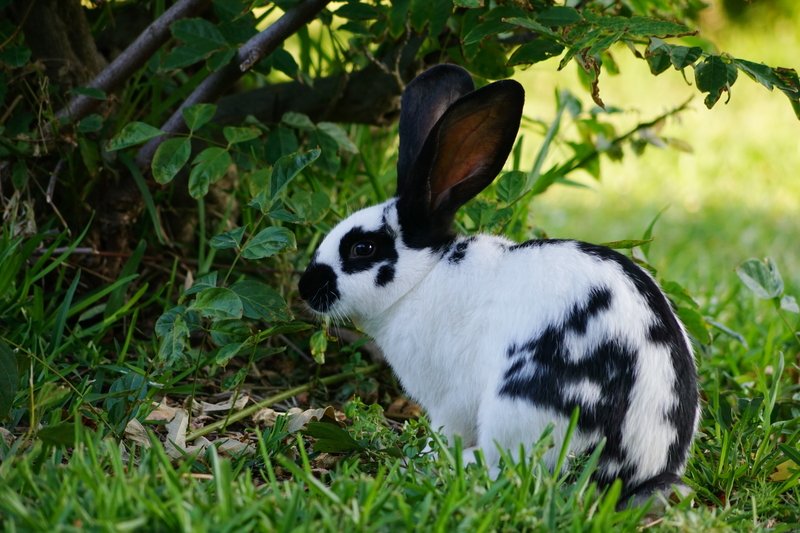
Temperament and Behavior
Unlike other giant rabbits, a Checkered Giant rabbit is not so cuddly and needy. Although you can’t expect it to ask you for some cuddles, it is sweet once you get along. This rabbit is known to be very active, so it requires owners who can keep up with its energy. As a running breed, Checkered Giants need to spend more time outdoors to play and stretch out.
These furry pets are ideal for singles, couples, and families with large spaces. Although gentle, Checkered Giants are not advisable as pets for small children. Kids are more likely to mishandle and drop them. It may injure the bunnies, or they may get frightened, biting or scratching the children.
Toys are vital to keep these bunnies occupied. Without mental stimulation or anything to do, they may chew your clothes or furniture. They are also known as intelligent creatures that you can train to use litter boxes. These giants can also recognize their names if you give your time and attention to teaching them.
Some owners reported that Checkered Giants could sometimes be aggressive. As much as possible, be responsible for handling them. Aside from that, give them the space and privacy they need. The average lifespan of Checkered Giants is five to eight years. But with proper care, they can reach ten years.
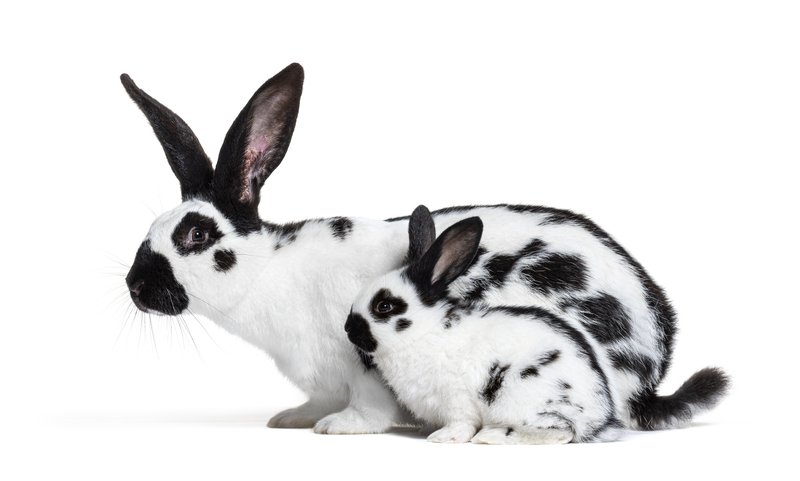
Grooming Checkered Giant Rabbit
Because of the short and soft fur of a Checkered Giant rabbit, grooming it is easy. But like other rabbits, it requires constant grooming. You must brush its coat with a durable comb at least once or twice weekly. Checkered Giants are meticulous groomers, cleaning themselves for hours. Prevent them from ingesting their furs by brushing them daily when they are molting.
If ever these bunnies get untidy, never bathe them. Although they are huge, they are vulnerable to water. Washing them may stress them, resulting in trauma and shock. Also, they may panic and fracture their spine and limb after kicking forcefully. A damp bunny may also suffer from hypothermia or respiratory infections. Instead of bathing them, get a wet cloth and wipe it on the coat’s dirty spot.
Trimming the rabbits’ nails is also required. It can be a challenging task since Checkered Giants are huge. If frightened, they may suddenly move and get injured while you are cutting their nails. If you have no experience trimming the rabbits’ nails, you can ask a groomer or a vet to do it.
Another task you should not neglect is checking the teeth of the bunnies. Overgrown teeth may affect their health. To prevent it, you must feed them with hay regularly. It helps in trimming their teeth. You must also give them something to chew, like safe toys and twigs. Bringing them to the vet will also help to check if they are suffering from malocclusion.
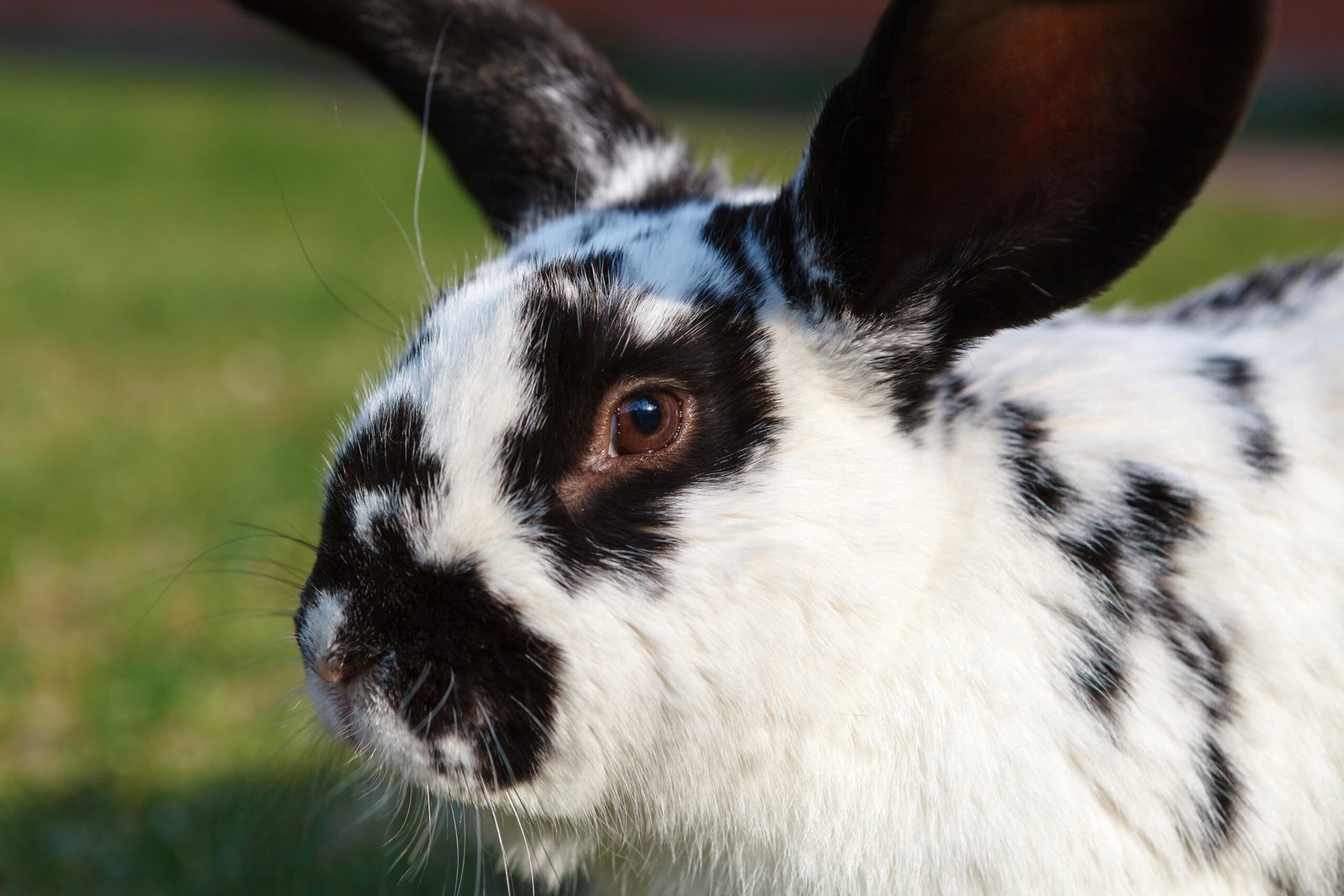
Proper Diet
A Checkered Giant rabbit needs an unlimited supply of hay daily to grow healthy. It must be seventy percent of its diet since it keeps its gut functioning well. Also, providing it with enough grass will help in trimming its teeth. Different types of hay are available, but you must choose the type that will suit your bunnies.
Unfortunately, some bunnies don’t like munching hay. One of the reasons is that you are feeding them tasty yet less nutritious food. If this is the case, you must reduce the dry food in their diet and feed them hay. You must give them tastier hay so that they may eat more of it. Mixing hay with leafy green will also encourage the bunnies to consume the dry grass.
Providing Checkered Giants with leafy greens will also make them stronger. Leafy greens are rich in vitamins and minerals. However, not all of them are safe for these bunnies. Before introducing new leafy greens to the rabbits, ensure they are safe. Some leafy greens suitable for rabbits are arugula, basil, cilantro, and Romaine lettuce.
Bunnies also need to consume treats occasionally so they will be happy. But you must give them treats in minimal amounts. Instead of giving them high-calorie foods like bread and pasta, feed them a tiny slice of fruit. Berries, grapes, and melon are some of the fruits you can give to them.
You must also remember to give an unlimited water supply to Checkered Giants. Because of their size, they need to consume enough water every day. Since they are very active, they can quickly get thirsty. Water also cools down their bodies, especially during hot days.
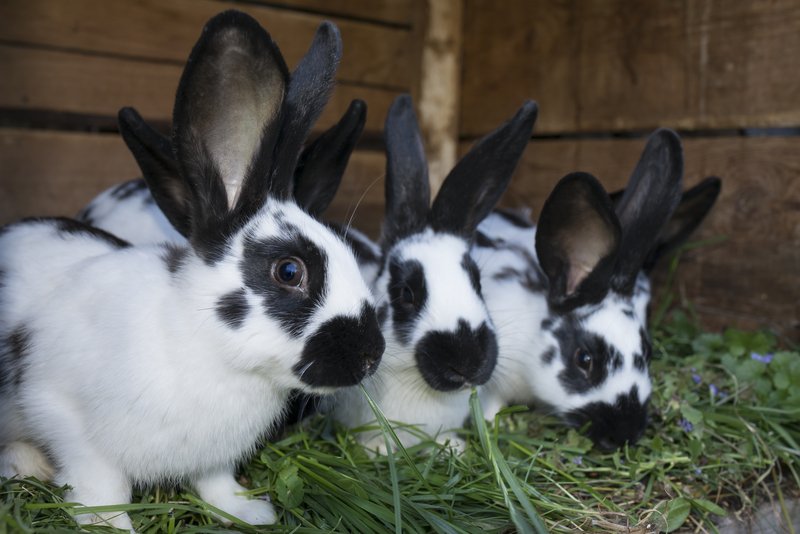
Habitat
One of the most crucial factors when getting giant rabbit breeds is their habitat. A Checkered Giant rabbit cannot live in small apartments. It needs enormous spaces where it can stretch and play comfortably. If you want to keep it outdoors, ensure its enclosure is safe from predators. Although it is huge, it is still a prey animal.
The ideal size of their enclosure is 12 by 12 feet. It must be high enough that they won’t bump their heads when they stand. The area must be wide enough for them to hop at least three times. Since giant rabbits are prone to sore hocks, provide the bunnies with solid flooring. You also place everything they need, like a litter tray, water bottle, hay rack, and bedding.
A dog cage or a shed is also a suitable enclosure for Checkered Giant rabbits. But make it very comfortable for them by putting insulation and covering the floor. You can also let these bunnies live inside your house. But you must make your home rabbit-proof since they love to chew. Biting wires may electrocute them, leading to their death.
You need a tall fence for outdoor activities to prevent them from escaping. It must also be safe from predators like foxes and dogs. As much as possible, the fresh grass must be free from pesticides. You can let them play unsupervised. But ensure that there are no cables they can chew or chemicals they can ingest.
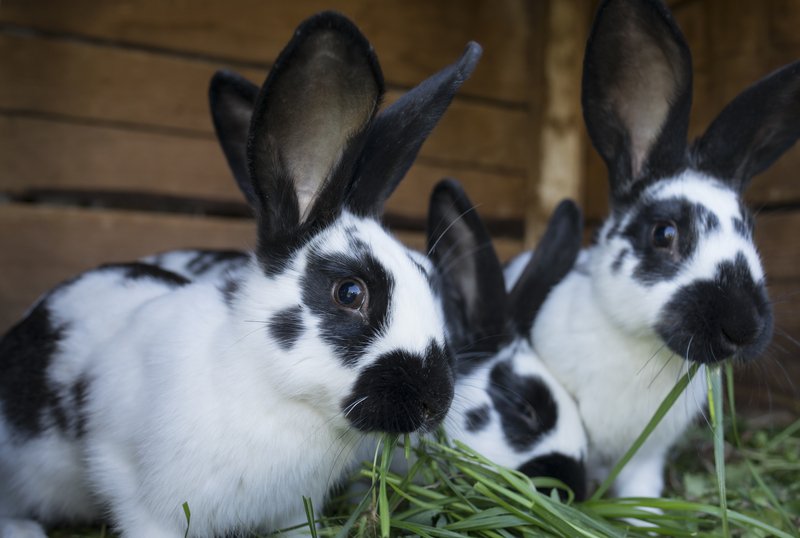
Health Issues of Checkered Giant Rabbit
Ear Mites
A Checkered Giant rabbit may suffer from ear mites. Psoroptes cuniculi are the usual mites that infest rabbits, goats, and horses. They burrow the external folds and the external ear canal. They will lay eggs inside the ear. It may result in bacterial infections or fatal meningitis. Since ear mites are contagious and lethal, you must take an infected rabbit to the vet. Some of the symptoms of this condition are the following:
- Head shaking and scratching
- Flaking on the outer ear canal
- Ear drooping
- Pain and discomfort
- Foul smell to the air
- Head tilt
You must separate the infected bunny to prevent contamination. The vet will give antiparasitic drugs in oral or injectable form. Applying topical ointment to the affected area may also be done. The treatment will last for 10 to 14 days. You must also isolate the bunny for 4 to 6 weeks to ensure it is free from the mites.
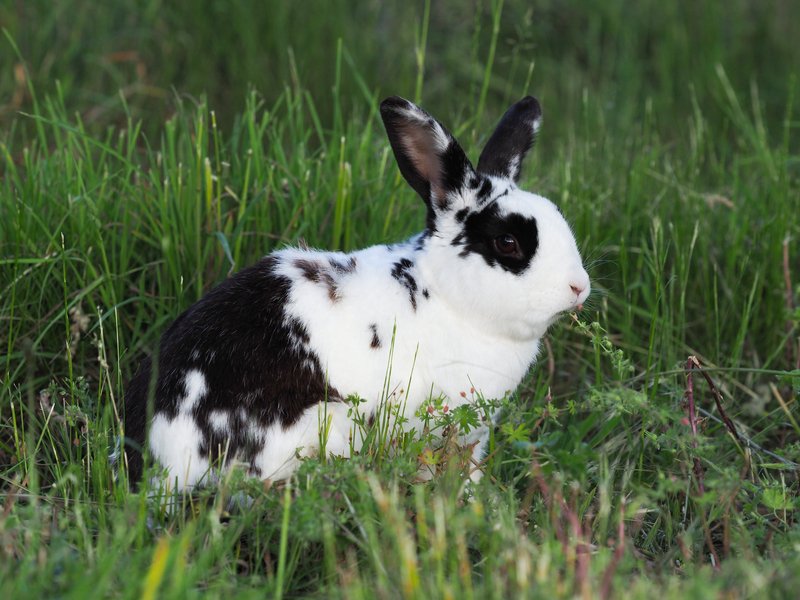
Gastrointestinal stasis
Checkered Giant rabbits may experience gastrointestinal stasis due to an incorrect diet. Because of their size, some owners think these bunnies can eat everything. However, they have sensitive digestive systems like the smaller breeds. GI stasis happens when the normal bacteria in the digestive tract become imbalanced.
Other causes besides incorrect diet are anorexia, stress, dehydration, and gastrointestinal blockage. Once your bunny suffers from this condition, you may observe the following symptoms:
- Hunched posture because of pain
- Teeth grinding
- Soft stool or diarrhea
- Excessive gas
The treatment may include fluid therapy if the bunny is already dehydrated. The vet will also prescribe your pet simethicone, pain relievers, and motility drugs. You must also feed your bunny from your hand due to appetite loss.
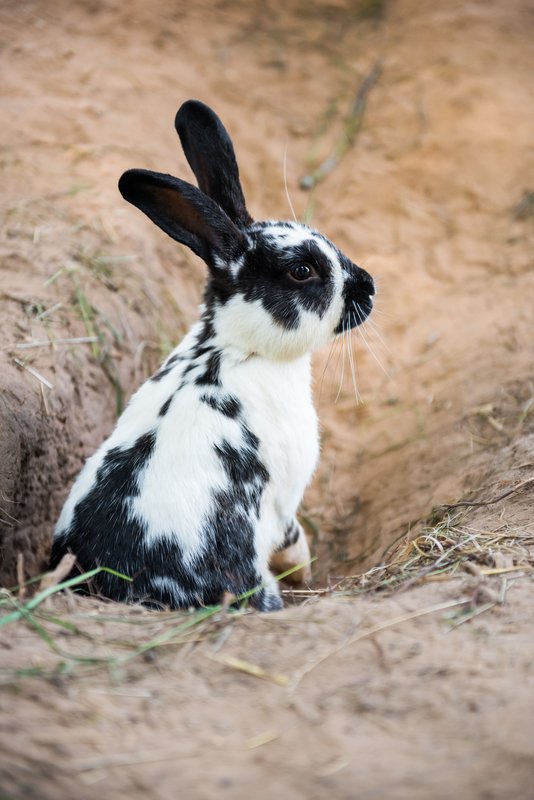
Frequently Asked Questions
How many litters can a Checkered Giant rabbit produce?
A Checkered Giant rabbit can produce 11 to 14 kits. They start mating when they are in their 12 to 18 months. Does are known to be excellent mothers, so they are suitable for breeding.
How much is the average price of a Checkered Giant rabbit?
This breed is more costly compared to other breeds. Its average price is between $50 and $80. But if you are looking for show quality, expect that you have to pay more. Ensure to buy only from reputable breeders.

Are Checkered Giants good pets?
These breeds are not usually as affectionate as other bunnies. However, they are sweet once they learn to trust their owners. They are ideal for owners who prefer bunnies that are not needy yet playful and active.
The Beauty of the Checkered Giant Rabbit Breed
A Checkered Giant rabbit differs from other rabbit breeds because it isn’t affectionate. However, it is still an excellent pet due to its playfulness and enthusiasm. Although massive, these bunnies need to be cared for like other rabbits. As you give them proper care, they will also reciprocate it with their love and affection.
For another unusual colored rabbit, take a look at the Harlequin Rabbit Breed.
Read More
